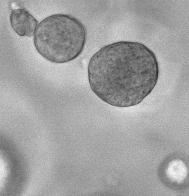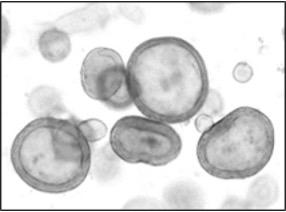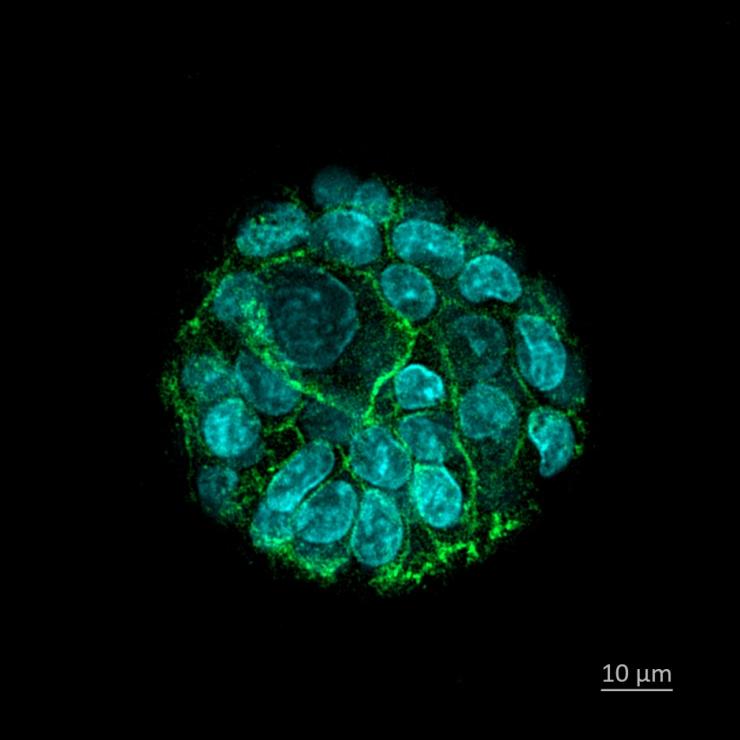Our Services
Organoid Generation and Culture
- Organoid generation (human patient)
- Organoid line maintenance and expansion
- Organoid line cryopreservation and reviving
- Organoid line differentiation (Transwells/96 well plate/microchip/culture slide)
Organoid Culture Analysis
- Histological assessment of organoids (PU-MA System)
- Organoid authentication (RNA isolation- Gene expression Assay)
- Organoid drug treatment (PU-MA System)
- Organoid coculture (Immune cells- parenchymal cells-PU-MA System)
Human Lung Organoids (HNO-HTBO-HAO)
Consultation Services
- Project consultation
- Experimental design and planning training
Instrument Services
- PU-MA System
Human Nasal Organoid & Human Trachea/Bronchial Organoid (HNO-HTBO)

Our lung organoid is essentially an in vitro 3D culture system known as airway (nasal passage), distal lung (trachea/bronchia) and proximal lung (alveolar) organoids. The 3D organoids of the lung accurately replicate the histological and functional aspects of the in vivo nasal/bronchial/alveolar tissue. Human lung organoid differentiation provides researchers with a controllable, accessible and reproducible system for culturing an organoid model of human airway/ lung epithelium. This system is a validated method that reflects the structural organization and cellular heterogeneity, including the expression of nasal and lung markers, of the human epithelium.
| Type | Unit | Rate |
|---|---|---|
| Cryoperservation | Per vial | $439.89 |
| HNO/HTBO propagation media | 10 mL | $40.07 |
| HNO/HTBO seeding media-ALI | 10 mL | $54.06 |
| HNO/HTBO differentiation media | 10 mL | $40.07 |
| 3D organoid | Well | $54.05 |
| 2D-ALI | Transwell | $65.50 |
| Generation of HNOs | Sample | $957.54 |
| Type | Unit | Price |
|---|---|---|
| Cryoperservation | Per vial | $439.89 |
| Alveolar propagation media | 10 mL | $58.42 |
| Alveolar seeding media-ALI | 10 mL | $57.00 |
| Alveolar differentiation media | 10 mL | $56.97 |
| 3D organoid | Well | $56.79 |
| 2D-ALI | Transwell | $68.24 |
| Generation of HOAs | Sample | $1,021.61 |
Human Bladder Organoids (HBO)

Derived from healthy primary bladder dome cells, they consist of the 3D structures of epithelial cells that recapitulate many aspects of the urothelium.
| Type | Unit | Price |
|---|---|---|
| Cryoperservation | Per vial | $461.55 |
| Bladder propagation media | 10 mL | $56.62 |
| Bladder seeding media-ALI | 10 mL | $56.62 |
| Bladder differentiation media | 10 mL | $37.71 |
| 3D organoid | Well | $53.28 |
| 2D-ALI | Transwell | $62.58 |
| 2D-96 well plate | Well | $61.17 |
| Generation of HOAs | Sample | $969.85 |
Human Vaginal and Endocervical Organoids (HVO-HEO)

Derived from healthy human vaginal scrapings. Under optimized medium conditions organoids from both lineage are generated. Vaginal organoids (HVO) formed stratified dense cells, and endocervical organoids (HEO) formed hollow cystic structures.
| Type | Unit | Price |
|---|---|---|
| Cryoperservation | Per vial | $59.15 |
| Vaginal propagation media | 10 mL | $54.85 |
| Vaginal seeding media-ALI | 10 mL | $54.85 |
| Vaginal differentiation media | 10 mL | $54.85 |
| 3D organoid | Well | $52.78 |
| 2D-ALI | Transwell | $64.04 |
| 2D-96 well plate | Well | $62.74 |
| Generation of HOAs | Sample | $1,160.56 |
| Type | Unit | Price |
|---|---|---|
| Cryoperservation | Per vial | $905.41 |
| Endocervix propagation media | 10 mL | $59.21 |
| Endocervix seeding media-ALI | 10 mL | $59.21 |
| Endocervix differentiation media | 10 mL | $59.21 |
| 3D organoid | Well | $68.15 |
| 2D-ALI | Transwell | $80.65 |
| 2D-96 well plate | Well | $73.38 |
| Generation of HOAs | Sample | $1,250.20 |
Instrument Services Pu-MA Systems

The Pu-Ma system automates assays for 3D models, using specially designed Flowchips with valve-less fluidic switching that eliminates mechanical perturbations of the organoids while processing. This enables automated media or reagents exchange, supernatant sampling or compound treatments. Flowchips require a minimal volume of sample and reagents, 2-20ul per well, and have an optical clear bottom, compatible for imaging.
Pu-Ma System 3D Assays
- Immunofluorescence and dye staining
- In-situ supernatant sampling
- Sequential drug or compound additions
- Metabolomic profiling








